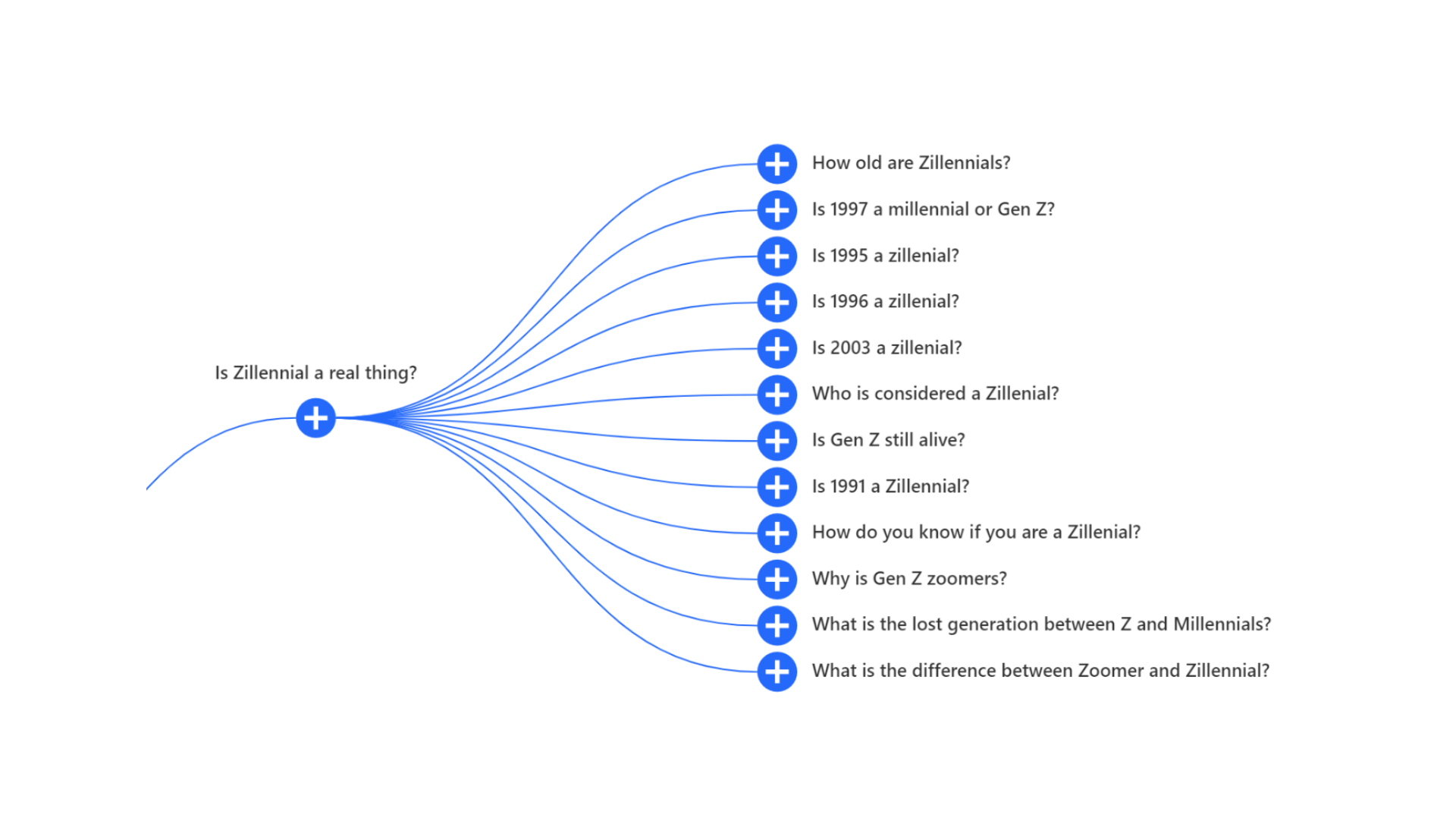Are Millennials and Zillennials the same thing?
Understanding the nuances between the oldest and youngest Millennials
ARTICLE BY LAURA COELHO
Social change happens as young people with new values become dominant in society, replacing older generations with more traditional values. Generations are shaped by what’s going on in the world around them as they grow up – from wars and economic conditions to pop culture trends and technological change.
But no generation is a monolith. People of the same age can have very different Social Values. In our Millennials Social Values Segmentation report, for example, Environics Research describes six distinct values segments within this large, influential cohort born between 1980 and 1995. Millennials are also the most diverse cohort of Canadians when it comes to ethnicity and identity.
As we conducted in-depth interviews across Canada to shape the Social Values report linked above, we also observed some differences between older members (born in the early 1980s) from younger ones (born in the mid-1990s). The differences we observed lent some credibility to the idea that there’s a micro-generation on the cusp between Millennials and Generation Z – a slice of the population some have labelled as “Zillennials” or “Zennials”.

Image Credit: alsoasked.com
To better understand whether there’s a difference between Millennials and Zillennials, we’ve dived into understanding these factors, what importance they serve to better understanding the Millennial segments, and how we can make sense of it all. When and how does the generational distinction between Millennials and Gen Z occur – and is it more nuanced than we think?
Early influences and cultural touchstones
The oldest Millennials, born in the early 1980s, were teenagers before the internet became a fact of daily life. They might well be the last group of young people whose cultural references were less driven by streaming and social media, and more shaped by broadcast TV offerings like Friends and The O.C.
The youngest Millennials had a very different experience of growing up. Not only was the internet part of the background of their childhoods, but mobile phones that made connectivity ubiquitous emerged when they were still kids. Before cutting the cable cord completely, they were shaped by early 2000s Disney Channel hits like Hannah Montana.
Regardless of these different influences, through our research however, we discovered through our research that there are still important similarities across the Millennial cohort when it comes to having similar perspectives on the meaning of life which guides their decisions.
Nuances in nostalgia
Today, as Millennials indulge in nostalgia and make winking references to the trends of their youth, older and younger members of the cohort have different frames of reference.
Younger Millennials and Generation Z have been calling back to Y2K-era pop culture. This year, even Halloween costumes featured celebrities of the early 2000s – using flip phones and wearing skinny low-rise jeans (yes, they’re back). These references to old-school material culture will resonate most strongly with people who are closest together in age; Zillennials and their older peers will connect and laugh at different things.
When it comes to consumer goods and especially gadgets and technology, younger Millennials (or Zillennials) have a significantly different frame of reference from older members of their cohort. If you’re a Millennial, which of these items do you remember most vividly from early life?
How did you listen to music?

How did you stay occupied during a roadtrip?

How did you ask your friends if they were free to hangout?

The role of technology
Although some older Canadians assume that all Millennials live and breathe digital technology because they grew up with it, the truth is that some Millennials – especially older ones – are conflicted about the role of technology in their lives.
When younger Millennials were growing up, the internet was used for all forms of entertainment – from streaming music to chat and messaging apps. Technology was a constant in their social and personal lives and also came to dominate their learning environments. Younger Millennials remember school chalk boards being replaced with Smart Boards and touchscreens, for example.
Older Millennials also used digital devices for entertainment in childhood – notably desktop computers and gaming consoles – but tech was less a part of their early educational experiences and did not become a dominant mode of social interaction until later on. Simply put, older Millennials grew up pre-internet and younger Millennials grew up with internet. This may help to explain why today many older Millennials have a more ambivalent relationship with technology (and in some cases are trying to reduce their reliance on it) while younger Millennials tend to be more comfortable with its full integration into their lives.
Gen Z is even more steeped in technology and less conflicted about its ubiquity. This outlook is a key difference between Gen Z and Millennials and may help to explain why some younger Millennials who are very at ease with tech sometimes feel a little “Zillennial.” (It’s worth noting that, despite nuances within the generation, Millennials overall are more at ease with technology than previous generations: Gen X, Boomers and Elders.)
So, who are Zillennials?
The people some observers have called Zillennials are, in our Social Values segmentation, younger Millennials. Do they need to be analyzed as their own distinct generation in order to be properly understood? Or are they truly still Millennials just with nuanced cultural experiences?
The debate points to the complexities of generational segmentation. Generations are full of internal diversity. Millennials in particular constitute a large cohort that is far from homogeneous. Younger members who have begun to brand themselves as “Zillennials” say they don’t always see themselves reflected in the larger Millennial category.
There’s some validity to this claim: they had distinct experiences in a rapidly changing cultural and technological landscape, which we’ve sketched out very briefly in this article. However, we find that in many ways, the key differences within the Millennial cohort are driven less by age and more by Social Values.
While Zillennials exist, they are as diverse in their values and perspectives as their older age peers – and they share plenty of common ground with slightly older Millennials when we ask them about how they see the world and their relationships (as opposed to their favourite gadget in middle school).
Organizations seeking to craft communications and offerings that resonate deeply with these young Millennials are probably better off focusing less on the in-jokes of micro-generations than on the deeper mindsets and motivations that shape their preferences and behaviours. All Millennials grew up at a time of rapid technological change; three years can make a big difference when those three years include the introduction of transformative innovations like the iPhone or social media. But even big changes don’t change every household, community, and school overnight – and people react to change differently (embracing or rejecting new gadgets, casting off old norms or seeing them as touchstones in turbulent times).
Zillennials may not be considered their own cohort, but we can better understand the similarities and differences across the younger and older Millennials through the Social Values segments that leverage their needs, motivations, and behaviours to make sense of who they are at their core.
Image Credits: Getty Images
Find out how our team can help your organization
Related insights



Toronto
366 Adelaide Street West
Suite 101, Toronto, ON
Canada M5V 1R9
416 920 9010
Ottawa
135 Laurier Ave W.
Ottawa, ON
Canada K1P 5J2
613 230 5089
Calgary
421 7th Ave SW
Suite 3000, Calgary, AB
Canada T2P 4K9
403 613 5735
